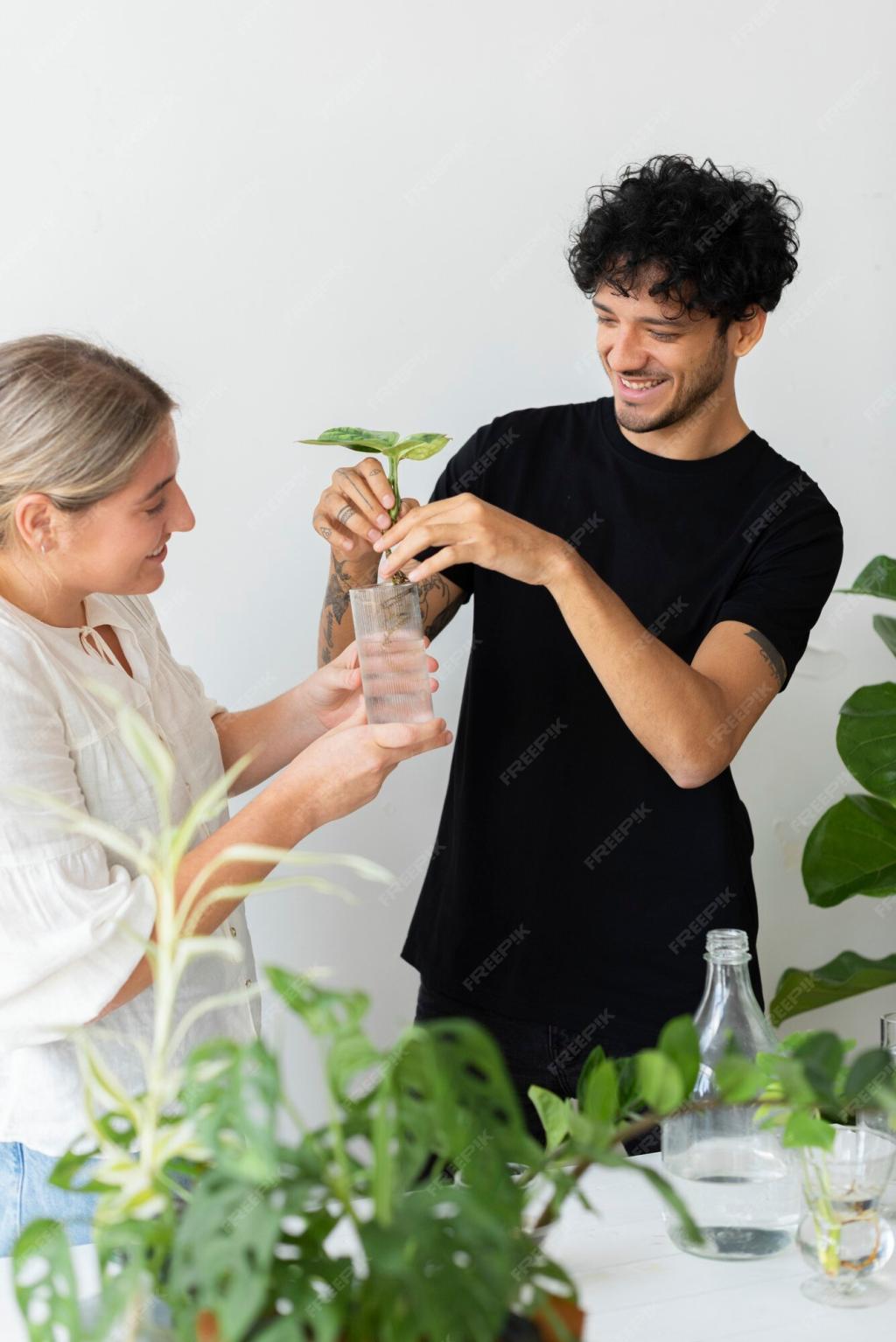Sustainable Textile Innovations: Eco-Friendly Materials in Fashion
Sustainable textile innovations are reshaping the future of fashion, offering solutions to one of the industry’s most pressing concerns: environmental impact. This evolution is powered by new materials, creative processes, and a shift toward responsible production and consumption. From plant-based fibers to recycled synthetics and closed-loop manufacturing, the fashion sector is embracing a wide spectrum of eco-friendly materials and techniques. This page explores how cutting-edge innovations are transforming textiles, why they matter, and the potential they hold for a cleaner, more sustainable industry.
Water Usage and Pollution
Traditional textile manufacturing is infamous for its excessive water consumption, particularly in cotton cultivation and dyeing processes. It often leads to water scarcity in certain regions, affecting agriculture and local communities. Additionally, chemicals used in bleaching and dyeing are frequently discharged into rivers and streams, contaminating drinking water and harming aquatic life. As the global population grows and water resources become more precious, the textile sector’s water footprint has drawn increasing scrutiny. Reducing water use and preventing pollution are thus crucial drivers for switching to sustainable textile options that minimize environmental harm.
Chemical Impacts and Toxicity
The widespread use of synthetic chemicals in textiles—from pesticides on cotton farms to toxic dyes in garment production—poses significant health and environmental risks. These substances can remain in the finished fabric, exposing wearers and workers to hazardous effects. Moreover, residues often migrate into the air, water, and soil during production and disposal. Persistent organic pollutants from conventional textile processing can have far-reaching consequences for ecosystems and human health. Sustainable innovation seeks to replace harmful chemicals with safer alternatives and promotes processes that eliminate or drastically reduce toxicity.
Waste Generation and Landfill Overflow
Mass production and the fast fashion cycle have generated massive amounts of textile waste worldwide. Garments often end up in landfills, where synthetic fibers take centuries to decompose, releasing microplastics and greenhouse gases. Many traditional textiles are difficult to recycle or repurpose due to blended materials or chemical treatments. This escalating waste crisis has prompted a search for textiles designed for recyclability, biodegradability, or circular reuse. Innovations in sustainable fabrics target not just eco-friendly sourcing but also end-of-life solutions to minimize their environmental footprint.
Plant-Based Fibers: Nature’s Alternative
Organic Cotton and Linen
Organic cotton and linen exemplify the possibilities of plant-based alternatives in fashion. Unlike conventional cotton, organic variants are grown without harmful pesticides or synthetic fertilizers, preserving soil health and supporting biodiversity. Linen, derived from the flax plant, requires less water and fewer chemicals to cultivate, making it a low-impact textile. Both fibers are breathable, durable, and biodegradable at end of life. Embracing organic farming practices and choosing natural fibers empower brands and consumers to support healthier ecosystems and communities, making these materials cornerstones of sustainable wardrobes.
Hemp: The Eco Powerhouse
Hemp has been lauded as one of the most sustainable textile crops available. It grows rapidly, requires minimal water, and often thrives without the need for pesticides or herbicides. Hemp’s deep roots help prevent soil erosion and improve soil quality for future crops. The fiber itself is strong, versatile, and naturally resistant to mold and UV damage, making it suitable for a wide range of clothing and accessories. Hemp textiles are also biodegradable, so their end-of-life impact is far less severe than synthetic alternatives. By integrating hemp into mainstream fashion, the industry can significantly lower its environmental footprint while supporting regenerative agricultural practices.
Bamboo and Regenerative Forestry
Bamboo is another popular plant-based material praised for its rapid growth and ability to regenerate after harvesting. When processed using closed-loop or mechanical methods, bamboo textiles can be soft, breathable, and antibacterial. However, the sustainability of bamboo depends on how it is cultivated and processed; responsibly managed bamboo forests and eco-friendly processing techniques are essential for realizing its green potential. By sourcing bamboo from regenerative forestry initiatives, brands help preserve natural habitats and promote long-term ecological balance, paving the way for more responsible plant-based materials.
Next-Generation Synthetics: Rethinking Performance Fabrics
Recycled polyester and nylon are game-changers in the eco-friendly materials landscape. Made by repurposing plastic bottles, pre-consumer textile scrap, or discarded fishing nets, these fibers reduce the demand for virgin fossil fuels and help address plastic pollution. Modern recycling technologies produce recycled polyester and nylon with performance and durability that rival their conventional counterparts. By integrating recycled synthetics into their collections, brands close the loop on resource use, divert waste from landfills and oceans, and move closer to circular fashion principles.
Bio-based synthetics represent an important step toward renewable alternatives to traditional plastics. Instead of relying on petroleum, these polymers are produced from plant-derived feedstocks such as corn, sugarcane, or castor beans. Bio-based polyamides and polyesters can be engineered for strength, elasticity, and moisture management, making them suitable for activewear and performance gear. Importantly, their production reduces carbon emissions and fossil fuel dependence. With advances in biotech and green chemistry, bio-based synthetics offer a promising pathway for high-quality, sustainable textiles that meet the demands of modern fashion.
Emerging degradable and compostable synthetic fibers aim to address the persistent issue of microplastic pollution. Unlike conventional synthetics, which persist in the environment for centuries, these innovative materials are engineered to break down under specific conditions, such as industrial composting. Brands are experimenting with biodegradable polyester blends that combine functionality with lower environmental persistence. While widespread adoption hinges on developing effective collection and composting systems, degradable synthetics represent a major leap forward in minimizing textile waste and environmental toxicity.
Textile Recycling Technologies: Closing the Loop
Mechanical Recycling and Fiber Retention
Mechanical recycling is the most established method for reclaiming textile fibers, typically from cotton or wool. The process involves shredding used garments or production waste, cleaning them, and spinning the fibers into new yarns. Although fiber length and strength may degrade with repeated recycling, recent advancements have improved the quality of mechanically recycled textiles. Brands are investing in closed-loop systems to collect post-consumer waste and reintroduce recycled fibers into new clothing, thus extending the lifespan of raw materials and reducing dependency on fresh resources.
Chemical Recycling and Molecular Regeneration
Chemical recycling goes a step further by breaking textiles down to their molecular building blocks. This advanced process can separate blended fabrics, such as polyester-cotton, and recover fibers in a virtually virgin state. Chemical recycling holds the promise of infinitely recyclable textiles, as the process restores fiber quality regardless of previous wear and tear. While currently costlier and less widespread than mechanical recycling, investments in this technology are accelerating. As scalability improves, chemical recycling could be key to solving fashion’s waste crisis and promoting a truly circular textile economy.
Upcycling and Creative Repurposing
Upcycling is an imaginative approach that transforms discarded textiles into products of higher value or quality than the original. Designers and brands are increasingly embracing upcycling to create limited-edition or one-off pieces with unique character. Unlike recycling, which often requires intensive processing, upcycling leverages creativity and craftsmanship to preserve the integrity of existing materials. This method reduces landfill waste, encourages slower consumption, and fosters a culture of repair and reuse. Upcycling highlights the synergy between sustainability and design innovation, inspiring both brands and consumers to rethink fashion’s lifecycle.
Regenerative Approaches and Closed-Loop Production
Regenerative Agriculture for Fiber Crops
Applying regenerative agriculture to fiber production involves practices like cover cropping, no-till farming, crop rotation, and managed grazing. These methods restore soil health, increase biodiversity, and sequester carbon, benefiting the environment far beyond the farm. For fashion brands, sourcing cotton, hemp, or wool from regenerative operations not only enhances sustainability credentials but actively supports climatesolutions. Regenerative agriculture offers a resilient, future-facing foundation for textile innovation, aligning fashion with the principles of planetary stewardship.
Circular Manufacturing and Zero-Waste Design
Circular manufacturing seeks to eliminate waste at every stage of textile production. Through design for disassembly, pattern efficiency, and modular construction, brands minimize offcuts and maximize material utilization. Forward-thinking companies are exploring take-back schemes, garment repair services, and closed-loop recycling programs to keep textiles in use as long as possible. Zero-waste design challenges traditional manufacturing paradigms by embedding circularity into the DNA of fashion, ensuring that materials maintain value throughout multiple lifecycles.
Cradle-to-Cradle Certification and Material Transparency
Certification schemes like Cradle-to-Cradle provide rigorous frameworks for designing products that are safe, circular, and responsibly made. Cradle-to-Cradle certified textiles meet strict criteria on material health, renewability, and end-of-life pathways. Material transparency further empowers consumers by disclosing environmental and social impacts, allowing for informed choices. Together, certification and transparency drive continuous improvement in textile innovation, ensuring new materials benefit both people and planet.


Previous slide
Next slide
Natural Dyes and Low-Impact Finishes
01
Using dyes extracted from plants, fruits, and minerals offers a non-toxic and biodegradable alternative to synthetic dyes. Techniques using indigo, madder root, turmeric, or clay minerals create a beautiful palette of colors with minimal environmental impact. Natural dyeing methods are often less resource-intensive but can require traditional expertise and careful sourcing. By incorporating artisan skills and renewable ingredients, brands can bring unique, earth-friendly colors to their collections while supporting small-scale growers and preserving cultural heritage.
02
Innovations such as waterless dyeing and digital printing are revolutionizing how fabrics are colored and patterned. Waterless dyeing utilizes air or supercritical carbon dioxide to infuse color, drastically reducing water and chemical consumption. Digital printing precisely applies inks, eliminating the need for large dye baths and reducing excess dye runoff. These technologies increase efficiency, decrease pollution, and enable greater design flexibility. As adoption grows, waterless and digital dyeing promise to make sustainable color the industry standard.
03
Low-impact fabric finishes enhance the performance of textiles without resorting to harmful chemicals. Using plant-based repellents, enzymatic softeners, or biodegradable coatings, brands can offer fabrics that repel stains, wick moisture, or provide sun protection naturally. These treatments prioritize human and environmental health, ensuring textiles remain safe throughout their lifecycle. Eco-friendly finishing is a crucial step in the journey toward responsible, fully sustainable apparel from raw fiber to finished garment.

